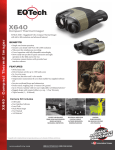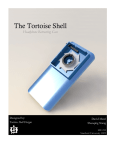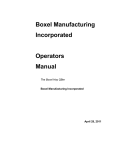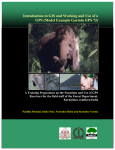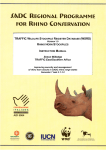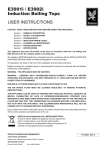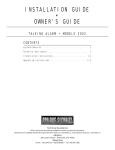Download User manual – Solar Water Pumps
Transcript
End-user Manual Solar Water Pumps Introduction This manual contains important information on your Solar Water Pump principles of operation, maintenance requirements and precautions and warnings on the hazards of working with a Solar Water Pump (hereafter referred to as System). Before using your System, please read, understand and follow all the instructions and cautionary markings contained in this manual. Please refer to the separate instructions of each of the individual components for further safety considerations and operating instructions. Liability RIWIK East Africa Ltd is not liable to the customer for any loss, injury, damage, expense or any liability whatsoever by using the System contrary to the instructions contained in this manual. Operations General • The System operation is fully automatic and does not require user intervention. • Never compromise the design, wiring or installation of the System. • For any maintenance or repair service, use a RIWIK technician. Water flow throughout the day The flow rate for solar pumps varies during the course of the day. Pumping takes place when the sun is shining. The pump system starts pumping slowly in the morning, with peak flow rate at noon, then reducing in the afternoon. Power Generation and Water Production The power generation of your system changes daily. On a sunny day, more power (and thus water) will be generated than on a rainy or cloudy day. A solar pump produces its highest volume of water when water is needed the most - when the weather is sunny and hot. Your water tank serves a storage capacity. At cloudy days with less water production, your system uses the water in a water tank. Dry Run Protection When the dry Run Switch trips and turns off the pump, it does not reset manually. There is a manual reset button on the face of the Dry Run Switch. It does not turn back on automatically to ensure the running dry problem has been corrected. An automatic restart has too much potential for ruining your pump, as it would keep cycling and eventually destroy itself. No attempts should be made to connect the solar panels to other devices. The solar panels should only be used for powering the pump. Connecting other devices to the solar panels will not work and there is a high risk of permanent damage. Safety considerations RIWIK’s Systems are safe when operating correctly. However, there are potentially dangerous hazards associated with some System components. Following safety instructions should be followed: • Do not touch the solar panels or the mounting structure once installed. When PO Box 68115-00200, Nairobi T:+254708725026 E: [email protected] W: www.riwikeastafrica.com • • • these surfaces are exposed to sunlight they can become extremely hot. Do not drop, allow objects to fall on, stand or step on solar panels. Do not walk, lean, sit or rest heavy objects on solar panels. Solar panels have a protective glass front. Broken solar panel glass is an electrical safety hazard. These panels must be replaced immediately. If you have a broken panel, turn your System off and contact RIWIK. Do not tamper with electrical wires or disconnect the controller nor pump. Maintenance Performing regular maintenance and inspection of your Energy System will help ensure System performance, increase product life time and minimize disruption due to component failure. We recommend regular inspection and maintenance by RIWIK. The owner of the System must not undertake any maintenance to the System other than the following: • • • • • Visually inspect for any cracked or broken solar panels. If broken glass is discovered, call for service immediately and turn your System off. Check that the solar array is not being shaded by vegetation or building structures. Trim vegetation if necessary. Check solar panel glass surface for dust, dirt and soiling from bird droppings. Clean the panel glass if necessary. Visual inspect the dirt level of the water that enters the pump (if possible) and if it is dirty call RIWIK. Check on leakages on all plumbing work and inform RIWIK if leakages occur. Anti-theft procedures The theft of solar panels is often cited as a risk of solar water pump systems, especially in situations where the solar panels are placed far away from the home. Should this also be the case for your system, here are some suggestions for minimizing the risk of theft of the solar panels. Try to establish a permanent presence at the water point or pumping installation by erecting a laborer’s home there. This will also help to control poaching and/or stock theft. Mark the underside of the panels with the farm name and contact details in non-removable paint. You can paint the entire underside in your favorite colors. This will be hard work for a thief to clean off. Keep records of serial numbers of all panels. This is proof that the panels are yours. Put a fence around the PV installation. Fit razor wire underneath the panels. This also deters animals from playing or tampering with your assets. But above all: make a plan! Do not leave solar panels exposed in the field without at least making it hard for thieves. WARNING: do not clean during the middle of the day when the glass is hot. Doing so can shatter the solar panel glass. Clean only at dawn or dusk when the glass is cool. PO Box 68115-00200, Nairobi T:+254708725026 E: [email protected] W: www.riwikeastafrica.com


